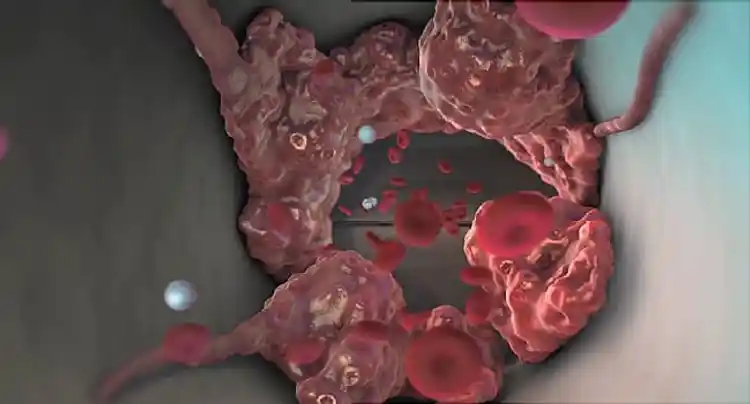How Blood Clots Form

Hide Video Transcript
Video Transcript
Blood is always flowing inside your body. But sometimes it doesn't move as well as it should, like after surgery, in pregnancy, or when you're sitting during a long trip. When that happens, you may be at risk for deep vein thrombosis, or DVT, when a blood clot forms in a vein, usually deep inside your leg.
Your veins don't just rely on your heartbeat to force blood through them. They also use the movement of nearby muscles to move it along. The veins also have valves that keep blood from flowing backward and pooling in your arms and legs.
When your blood doesn't move as well as it should, the blood flow in your veins slows down. Sticky substances, called clotting factors, can make your blood cells clump together. DVT happens when enough of those cells build into a blood clot. About half of people with DVT won't have any symptoms. But you might notice swelling, pain, or tenderness in your leg. The skin there might feel warm and look red. If you notice these signs, call your doctor right away.
Your veins don't just rely on your heartbeat to force blood through them. They also use the movement of nearby muscles to move it along. The veins also have valves that keep blood from flowing backward and pooling in your arms and legs.
When your blood doesn't move as well as it should, the blood flow in your veins slows down. Sticky substances, called clotting factors, can make your blood cells clump together. DVT happens when enough of those cells build into a blood clot. About half of people with DVT won't have any symptoms. But you might notice swelling, pain, or tenderness in your leg. The skin there might feel warm and look red. If you notice these signs, call your doctor right away.
